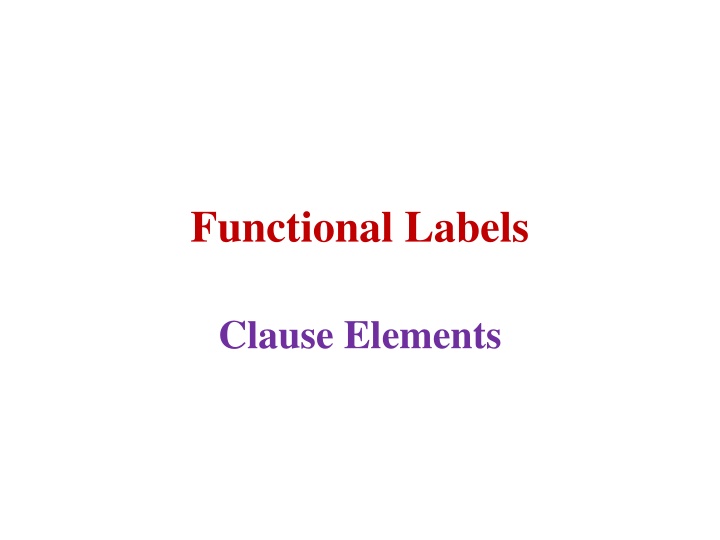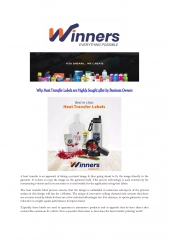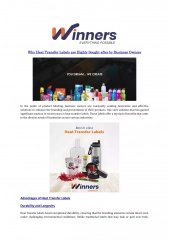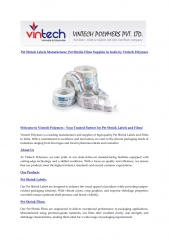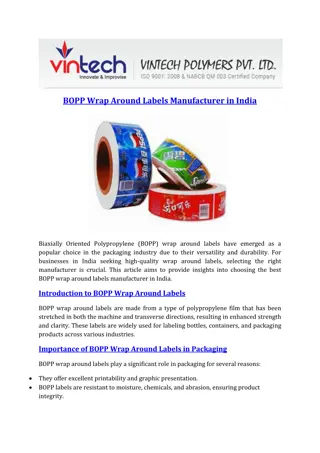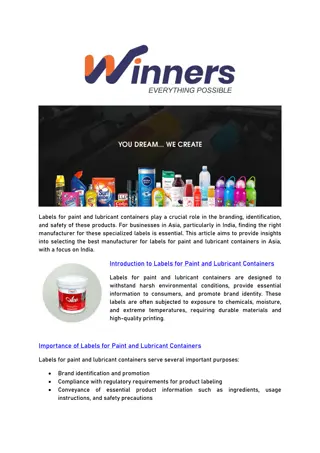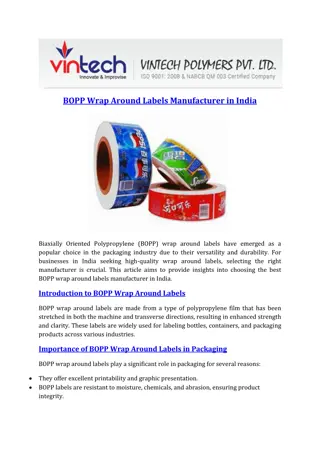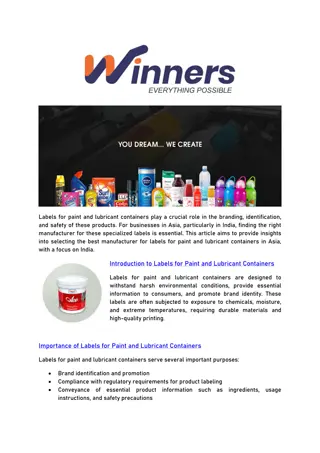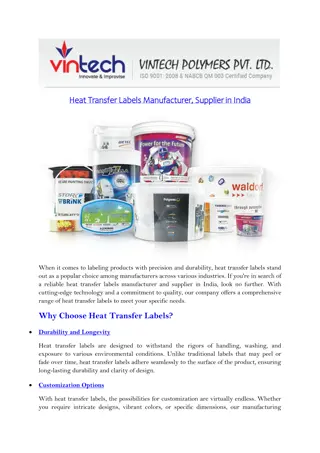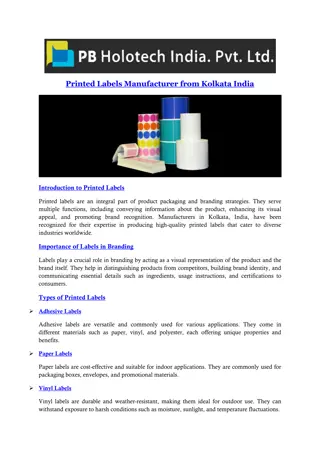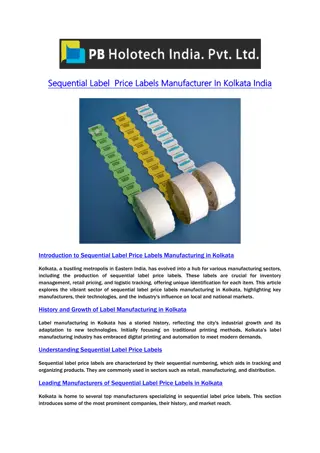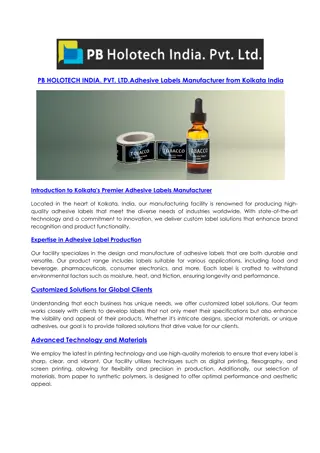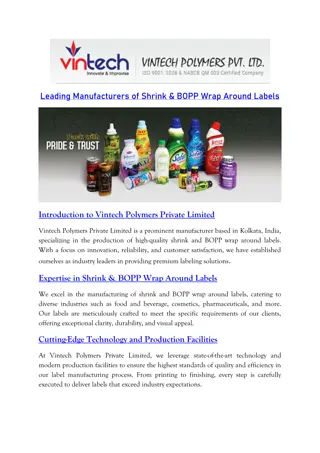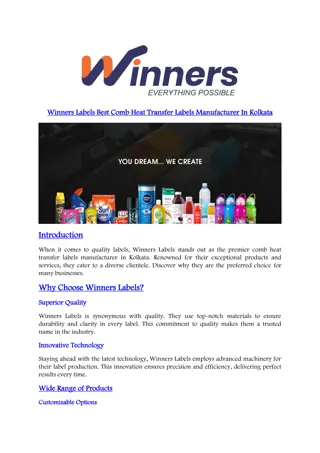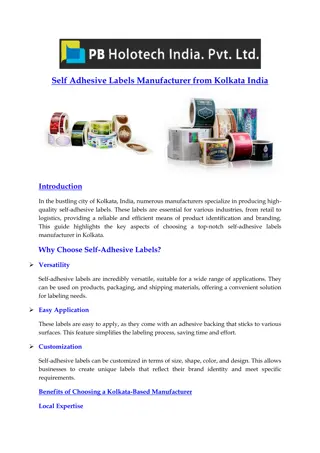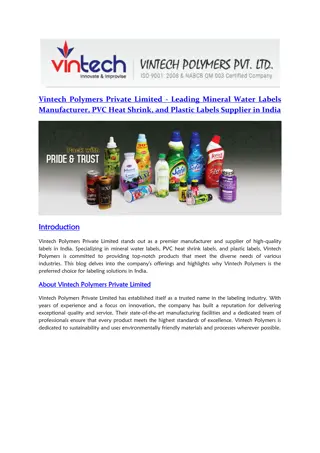Functional Labels
This content delves into word classes like nouns, determiners, adjectives, pronouns, and more. It also explores sentence structure elements such as subjects, predicates, objects, and their variations. Learn to identify subjects and objects in sentences, understand the role of predicates, and grasp the nuances of sentence construction.
Download Presentation

Please find below an Image/Link to download the presentation.
The content on the website is provided AS IS for your information and personal use only. It may not be sold, licensed, or shared on other websites without obtaining consent from the author.If you encounter any issues during the download, it is possible that the publisher has removed the file from their server.
You are allowed to download the files provided on this website for personal or commercial use, subject to the condition that they are used lawfully. All files are the property of their respective owners.
The content on the website is provided AS IS for your information and personal use only. It may not be sold, licensed, or shared on other websites without obtaining consent from the author.
E N D
Presentation Transcript
Functional Labels Clause Elements
WORD CLASSES Form Classes Functional Classes Formal Labels Open Functional Labels Close 1. Noun (N) 1. Determiner (d) 2. Adjective (Aj) 2. Pronoun (pn) 2. Direct Object 3. Adverb (Av) 3. Preposition (p) 3. Indirect Object 4. Verb (V) 4. Conjunction (cj) 4. Sub. Complement [Cs] 5. Interjection (ij) 5. Obj. Complement [Co] 6. enumerator (e) 6. Adverbial 1. Subject [S] [Od] [Oi] [A] [P] [M] 7. Predicate 8. Modifier
Subject # [S] Answers the Question Who? Subject : Noun/ Noun Phrase * Identify Subjects in the following 1. Julius Ceaser is a Play. 2. These girls are last year students. 3. Hyderabad is also called as Cybercity. 4. The reporter was shot. 5. The dogs bark.
Cont Subject occurs before Predicate (Verb) * Identify Subjects in the following 1. The children are watching TV. 2. The government has raised petrol prices. 3. P.V. Sindhu will play in the Olympics. 4. Karad is a historical place. 5. She can submit the report.
Cont. Empty Subject: 1. It is raining. 2. It is my daughter s birthday today. 3. It was nice meeting you. 4. It needs repair. 5. It was a deadly storm.
Predicate # [P] Predicate consists of either Main Verb (MV) or Auxiliary + MV * Identify Predicate in the following sentences: 1. Anne sings. 2. Anne sang. 3. Anne is singing a song. 4. Anne has been singing a song since morning. 5. Anne should have been sang a song nicely. 6. Anne might sing a song. 7. Anne had sung a song.
Object Direct # [ Od] Answers the Question What? Object Direct : Noun/ Noun Phrase * Identify Object in the following sentences: 1. John saw a cat under the table. 2. We bought some fruits yesterday. 3. She gave a speech. 4. The people were crossing the road. 5. She called the police.
Cont Object (d) occurs after Predicate (Verb) * Identify Object in the following sentences: 1. The squirrel ate the nuts. 2. Nicholas didn t eat his breakfast. 3. India has sent a spacecraft on Mars. 4. The Mother explained the meaning of religion. 5. She sang a beautiful song.
Object Indirect # Oi Answers the Question to When? Object indirect : Noun/ Noun Phrase Comes in Between P and Od. * Identify Oi in the following sentences: 1. She gave me a flower. 2. John showed the children his paintings. 3. The leader bought them some books. 4. The teacher gave the students easy sentences. 5. She gave her dog biscuits.
Complement (Subject) # Cs Cs can be either :Noun/Adjective/Adverb/Preposition. Cs describes a Subject. Cs follows Verbs such as : to be, become, look, seem, make, elect, consider, appear, tastes, smell, has, have, had, sound, prove, think, call, resemble, etc. * Identify Cs in the following sentences: 1. Mary is a girl. 2. Mary is happy. 3. The birds are on the tree. 4. The story was amazing.
Cont. * Identify Cs in the following sentences: 5. John became a teacher. 6. Suddenly, John became serious. 7. The clouds look dark. 8 .John looks a great scholar. 9. The project seems interesting. 10. They made a paper doll. 11. The members elected John. 12. They seemed sincere. 13. John appears enthusiastic. 14. John appears healthy.
Cont. * Identify Cs in the following sentences: 15. John appears to be a lawyer. 16. Sugar tastes sweet. 17. The room smells good. 18. The students have id card. 19. The girls have membership. 20. We find her quite entertaining. 21. Ann sounds right. 22. Ann resembles her mother.
Complement (Object) # Co Co can be either :Noun/Adjective/Adverb Co describes an Object. Co follows Verbs such as : make, elect, consider, find, prove, think, call, etc. * Identify Co in the following sentences: 1.They made her a fool 2. Anne made her daughter a teacher. 3. She considers him honest. 4. The lawyer proved her right.
Cont. * Identify Co in the following sentences: 5. We call John tiger. 6. Everyone calls her lazy. 7. The people elected him a President. 8. The boys found the game exciting.
Sr. No. Types of Adverb Meaning e.g. (Eliciting Question) 1 Place Where Here, there, out, in, up everywhere, down, above, below, away, inside, outside, etc. 2 Time When Now, then, soon, before, ago, since, late, daily, today, yesterday, etc. 3 Frequency How Often Twice, often, again, never, sometime, rarely, always, frequently, once, firstly, etc.
4 Manner How / in what manner Well, clearly, sadly, quietly, hard, bravely, fast, etc. 5 Degree How much/ to what extent Very, too, enough, fully, extremely, pretty, etc. 6 Affirmation/ Negation Surely, indeed, certainly, yes, no, not, etc. Luckily, fortunately, probably, etc. 7 Sentence So, Yet, However, Therefore, Secondly, Though, etc. 8 Connectives
Adverbial # [A] 1. John works in the morning. 2. Anne will meet her friend tonight. 3. John works in the Juice Factory. 4. Anne sang on the stage. 5. The soldiers fought bravely. 6. John works hard. 7. John often walks in the garden. 8. Actually, the grammar is easy. 9. Surprisingly, Anne works very sincerely in her office everyday.
Adverbial # [A] Cont. 10.People should not visit the market place frequently in COVID pandemic. 11. We should must visit the library once a week. 12. I have never seen this movie. 13. Shilpa cut the paper carefully. 14.The news came in Times of India
Basic Sentence Pattern S-P S-P-Od. S-P-Oi-Od. S-P-C S-P-O-C S-P-A. S-P-Od-A # Anne plays. # Anne plays cricket. # Anne gave John a ball # Anne is smart. # Anne called her friend silly. # Anne is in the class-room. # Anne kept her bag in the class.
